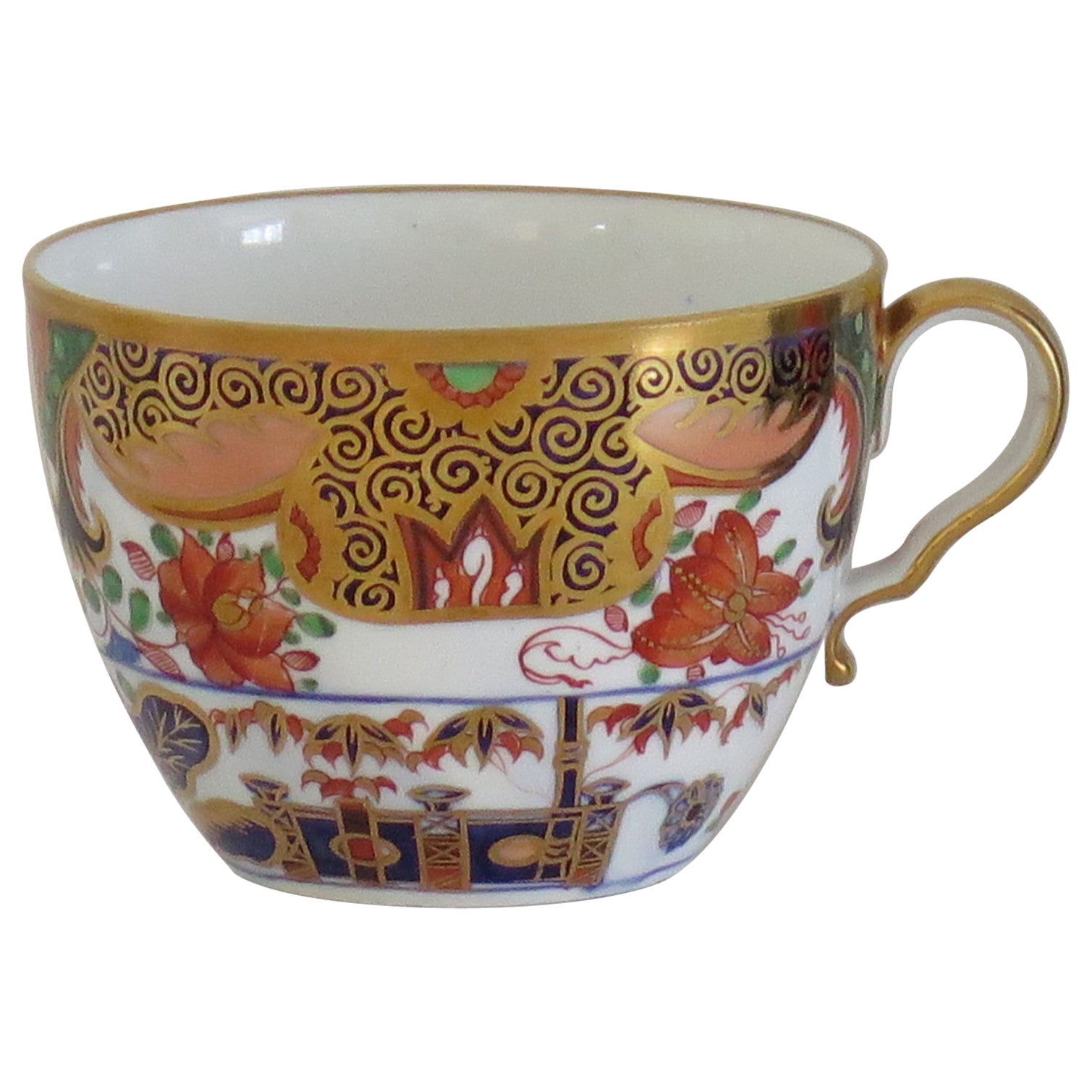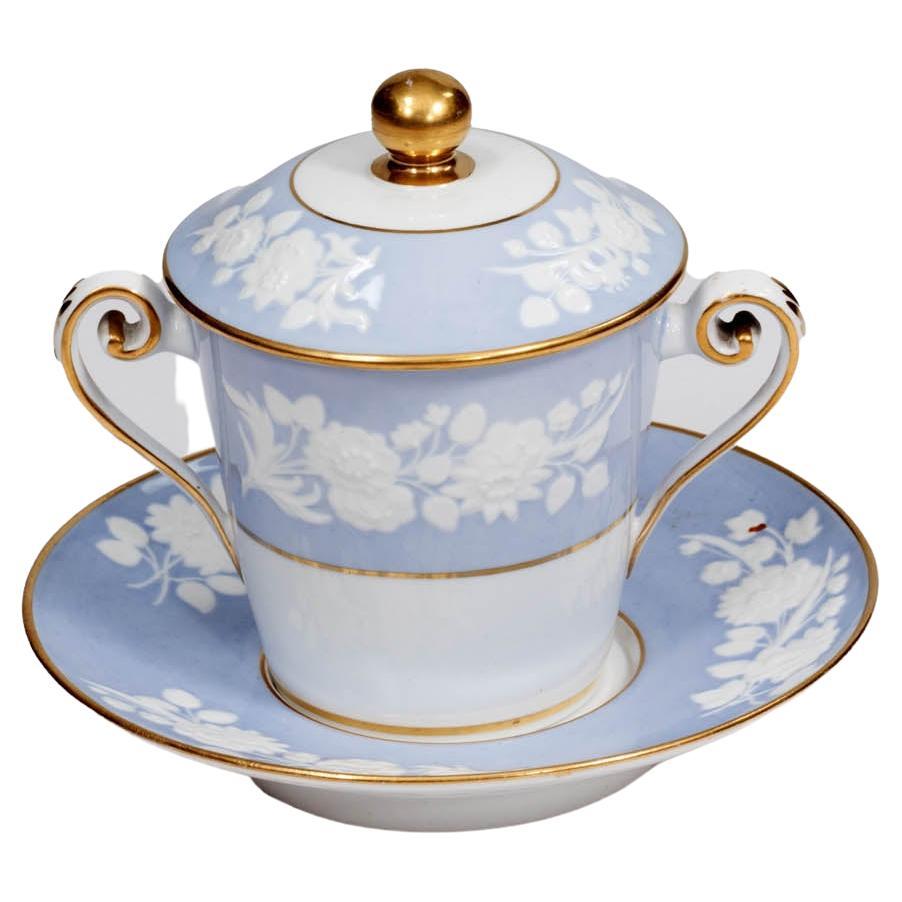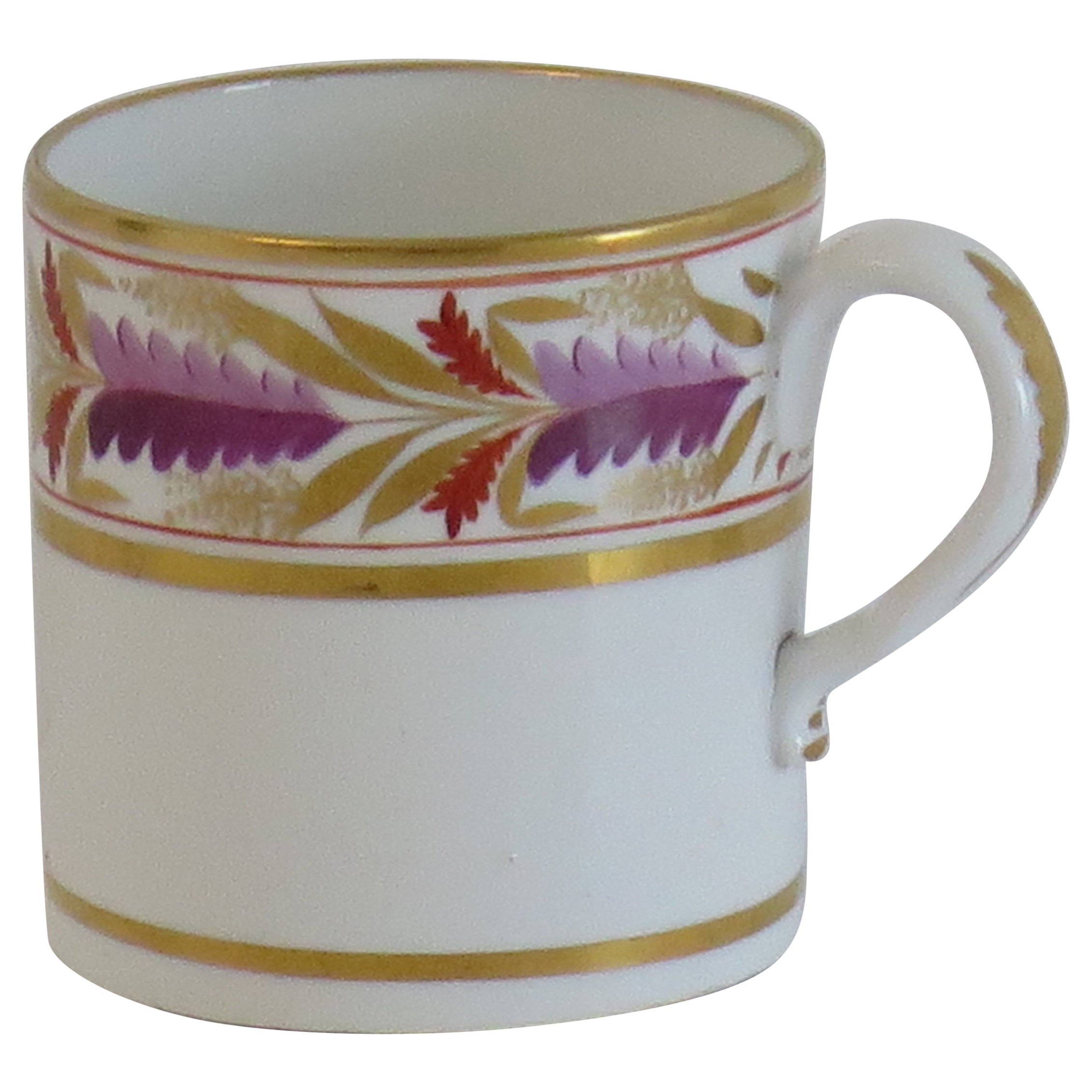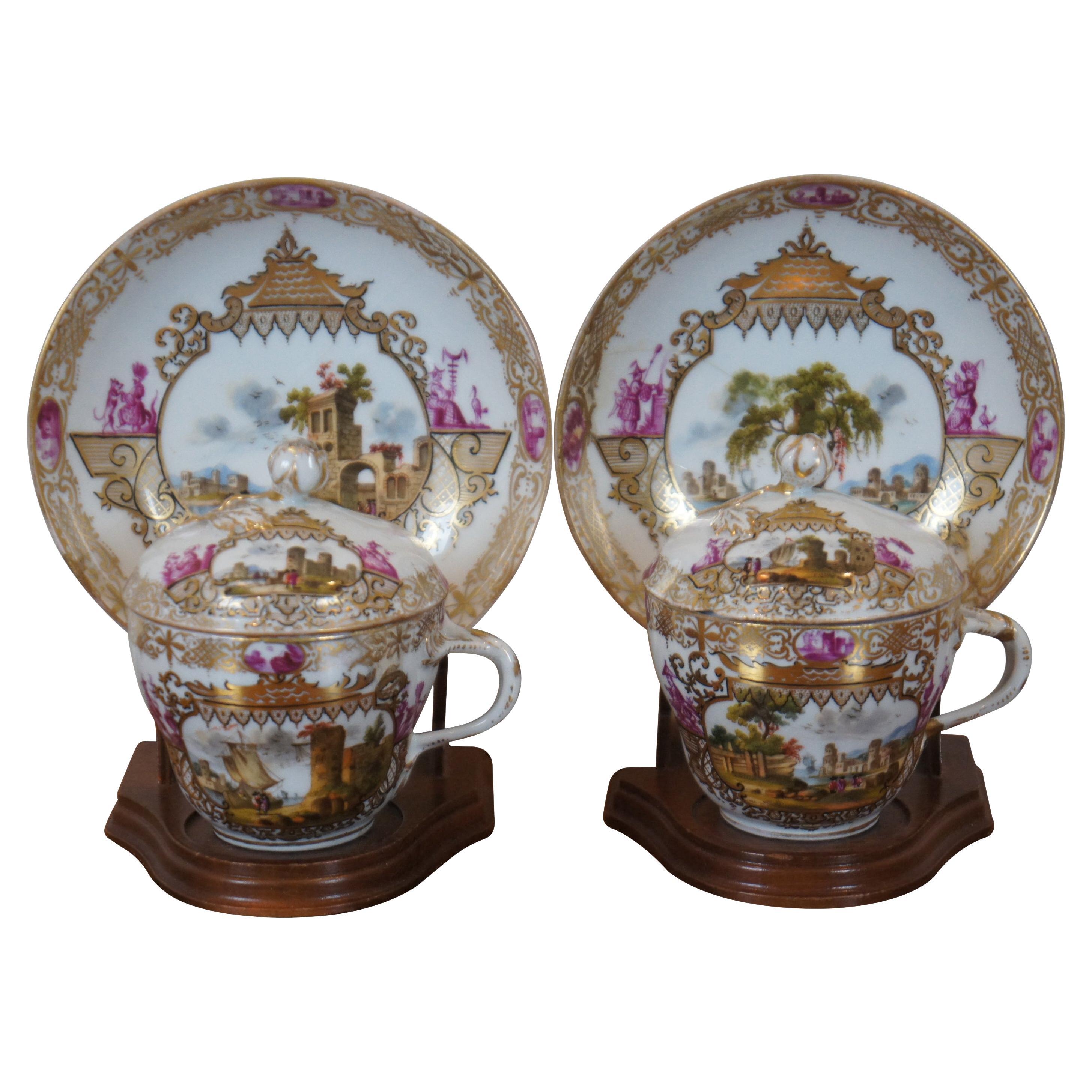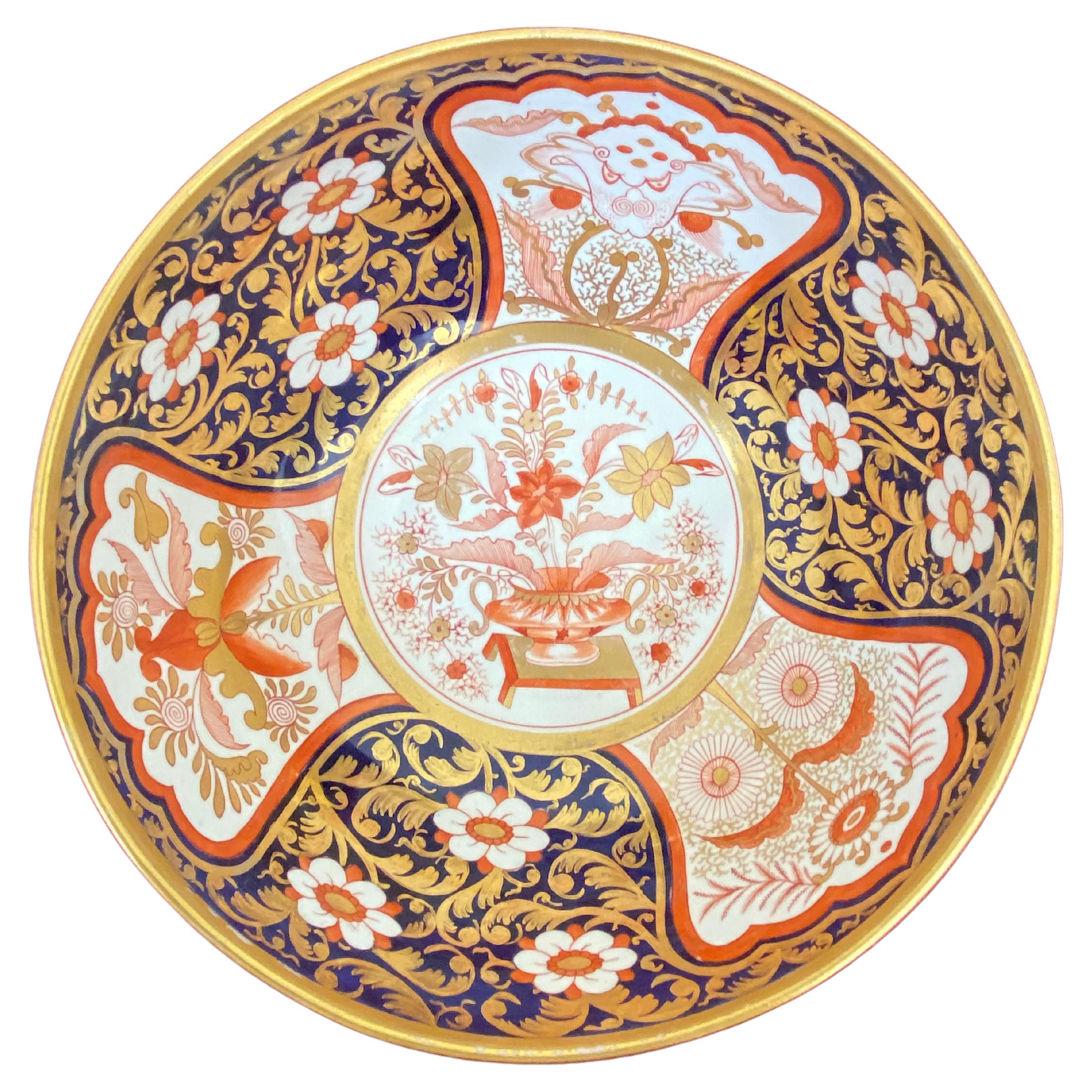Items Similar to A Spode porcelain chocolate cup, cover & stand c.1810
Want more images or videos?
Request additional images or videos from the seller
1 of 7
A Spode porcelain chocolate cup, cover & stand c.1810
About the Item
A very fine Spode bone china chocolate cup, cover and stand, vibrantly decorated in pattern 1494 which is an extremely ornate Imari design which covers every inch of the piece. This pattern was introduced c.1809 and was probably a direct copy of a Chinese/Japanese Imari original. All hand-painted to most of its exterior & part of its interior as well together with loads of rich gilt work this was another elaborate & labour intensive design for Spode's wealthiest customers only.
Condition: No damage. Some wear to the gilding as shown
- Dimensions:Height: 5.91 in (15 cm)Diameter: 5.12 in (13 cm)
- Materials and Techniques:
- Period:
- Date of Manufacture:1810
- Condition:Wear consistent with age and use.
- Seller Location:Exeter, GB
- Reference Number:1stDibs: LU6712238695732
About the Seller
4.0
Vetted Seller
These experienced sellers undergo a comprehensive evaluation by our team of in-house experts.
1stDibs seller since 2022
11 sales on 1stDibs
Typical response time: <1 hour
- ShippingRetrieving quote...Ships From: Exeter, United Kingdom
- Return PolicyA return for this item may be initiated within 14 days of delivery.
More From This SellerView All
- A very fine Spode porcelain punch bowl in pattern 944 c.1805-1810By SpodeLocated in Exeter, GBA very fine Spode porcelain punch bowl c.1805-1810. Finely decorated and gilded in a rich pattern number 944. Condition: ExcellentCategory
Antique 19th Century British Porcelain
MaterialsPorcelain
- A Spode porcelain Coffee Cup and Saucer very finely decorated c.1830By SpodeLocated in Exeter, GBA fine Spode porcelain coffee cup and saucer c.1830. Although the cup has twelve sides, it is still called 'Octagon' shape, which was introduced by Spode 1829. Very finely decorated...Category
Antique 19th Century European Porcelain
MaterialsPorcelain
- A Flight, Barr & Barr Worcester Porcelain Cabinet Cup & Stand c.1815By Flight, Barr & Barr WorcesterLocated in Exeter, GBA superb and rare Flight, Barr and Barr Worcester porcelain cabinet cup and stand, c.1815. With twin gilded handles, broad everted rim and a band of white applied pearls below the ri...Category
Antique 19th Century British Porcelain
MaterialsPorcelain
- Spode Porcelain Beaded Pot Pourri Vase C.1820-1825By Spode FelsparLocated in Exeter, GBA fine Spode Porcelain beaded Pot Pourri vase c.1820-1825. Of flared trumpet shape, embossed with three bands of pearls, resting upon three gilded paw feet, the pierces cover with fl...Category
Antique 19th Century English Porcelain
MaterialsPorcelain
- Rare Spode Porcelain Shell Decorated Vase Pattern 3930 C.1824By Josiah SpodeLocated in Exeter, GBAn incredibly beautiful and rare Spode porcelain vase decorated with shells to the front and flowers to the reverse. The shape name is "New Shape Fish Handled Beaker" and it was d...Category
Antique 19th Century English Porcelain
MaterialsPorcelain
- Five Spode Porcelain Trio's Decorated in Pattern 3614, circa 1822By Josiah SpodeLocated in Exeter, GBFive wonderful Spode Etruscan shape trios circa 1822. Each cup and saucer is finely decorated in Spode’s pattern 3614 with finely painted English Cabbage roses and embellished with r...Category
Antique 19th Century British Porcelain
MaterialsPorcelain
You May Also Like
- Spode Porcelain Tea Cup in Hand Painted & Gilded Pattern 967, circa 1810By SpodeLocated in Lincoln, LincolnshireThis is a fine example of an English George III period, porcelain Tea Cup, made by Spode and hand painted in Pattern 967, during the early 19th century, circa 1815. The cup has th...Category
Antique Early 19th Century English George III Ceramics
MaterialsPorcelain
- 19th Century Late Georgian Blue Spode Hot Chocolate Cup with Cover and SaucerBy SpodeLocated in Dublin 8, IE19th century late Georgian blue spode hot chocolate cup with cover and saucer, decorated with gilt highlights, and embossed white floral motif on a ...Category
Antique Early 19th Century English Georgian Porcelain
MaterialsPorcelain
- Georgian Spode Coffee Can Porcelain Pattern 1928, circa 1810By SpodeLocated in Lincoln, LincolnshireThis is a very good quality porcelain coffee can by Spode of Staffordshire, England, made during the very early 19th century, George 111rd period, circa 1805. The coffee can is no...Category
Antique Early 19th Century English George III Ceramics
MaterialsPorcelain
- 2 Antique Meissen German Porcelain Lidded Chocolate Tea Cups & Saucers on StandsBy Meissen PorcelainLocated in Dayton, OH"Pair of exqusite antique 19th century Meissen porcelain demitasse chocolate cups with lids and saucers, decorated with pink and gold borders and landscapes with stone buildings. Both are beautifully displayed on wooden stands. Provenance : Jerome Schottenstein Estate, Columbus Ohio. Jerome was was an American entrepreneur and philanthropist, co-founder of Schottenstein Stores Corp. The Schottenstein family were Lithuanian immigrants who began an extensive business empire in the late 19th Century. Schottenstein Stores owns stakes in DSW and American Signature Furniture...Category
Antique Late 19th Century Victorian Tea Sets
MaterialsPorcelain, Hardwood
- Spode Porcelain Teacup, Imari Tobacco Leaf Pattern 967, Regency ca 1810By SpodeLocated in London, GBThis is a beautiful teacup and saucer made by Spode in about 1810. The set is decorated with the famous Imari Tobacco Leaf pattern 967, which was first introduced by Spode in 1806. ...Category
Antique 1810s English Regency Porcelain
MaterialsPorcelain
- Spode Porcelain Teacup Trio, Red Imari Dollar Pattern, Regency, ca 1810By SpodeLocated in London, GBThis is a beautiful orphaned teacup made by Spode in about 1810. It bears a beautiful Japanese-inspired Imari pattern. Spode was the great pioneer among the Georgian potters in England. Around the year 1800 he perfected the bone china recipe that has been used by British potters ever since, and he was also the leading potter behind the technique of transferware, making it possible for English potters to replace the Chinese export china, which had come to an end around that time, with their own designs. This was fundamental to a thriving industry that would last for about 150 years and provide half the world with their tableware. Spode porcelain is regarded as one of the highest quality porcelains around; for a soft-paste porcelain it is surprisingly hard and fine, and has a wonderful bright white colour. The pattern on this can is called "Dollar" pattern, a very famous pattern that was used by English potters in the 18th and early 19th Century. It is obvious why it is called “dollar” - but its origin is less obvious! It is thought that this pattern was derived from a very old Chinese pattern depicting a tree with elaborate foliage that hides a Chinese character representing longevity or happiness. Traditionally, this went with a an image called “Taotie”, which was used on very ancient bronze vases...Category
Antique Early 1800s English Regency Porcelain
MaterialsPorcelain
Recently Viewed
View AllMore Ways To Browse
Blue Antique 18th Century Plates
Serves Floral Porcelain
Andy Warhol Rosenthal Studio Line
Coalport Bird
Meissen Watering Can
Luke Edward Hall Ceramics
Mushroom Dishes
Meissen Limoge Style
Minton China Hand Painted
Bayerisches Konigsservice
Bjorn Wiinblad Romanze
Masons Tea Cup
Royal Copenhagen Blue Fluted Half Lace
Royal Copenhagen Blue Half Fluted
Royal Copenhagen Fluted Half Lace
Royal Copenhagen Half Lace
Versace Rosenthal Barocco
Ikat Dinner Plates
